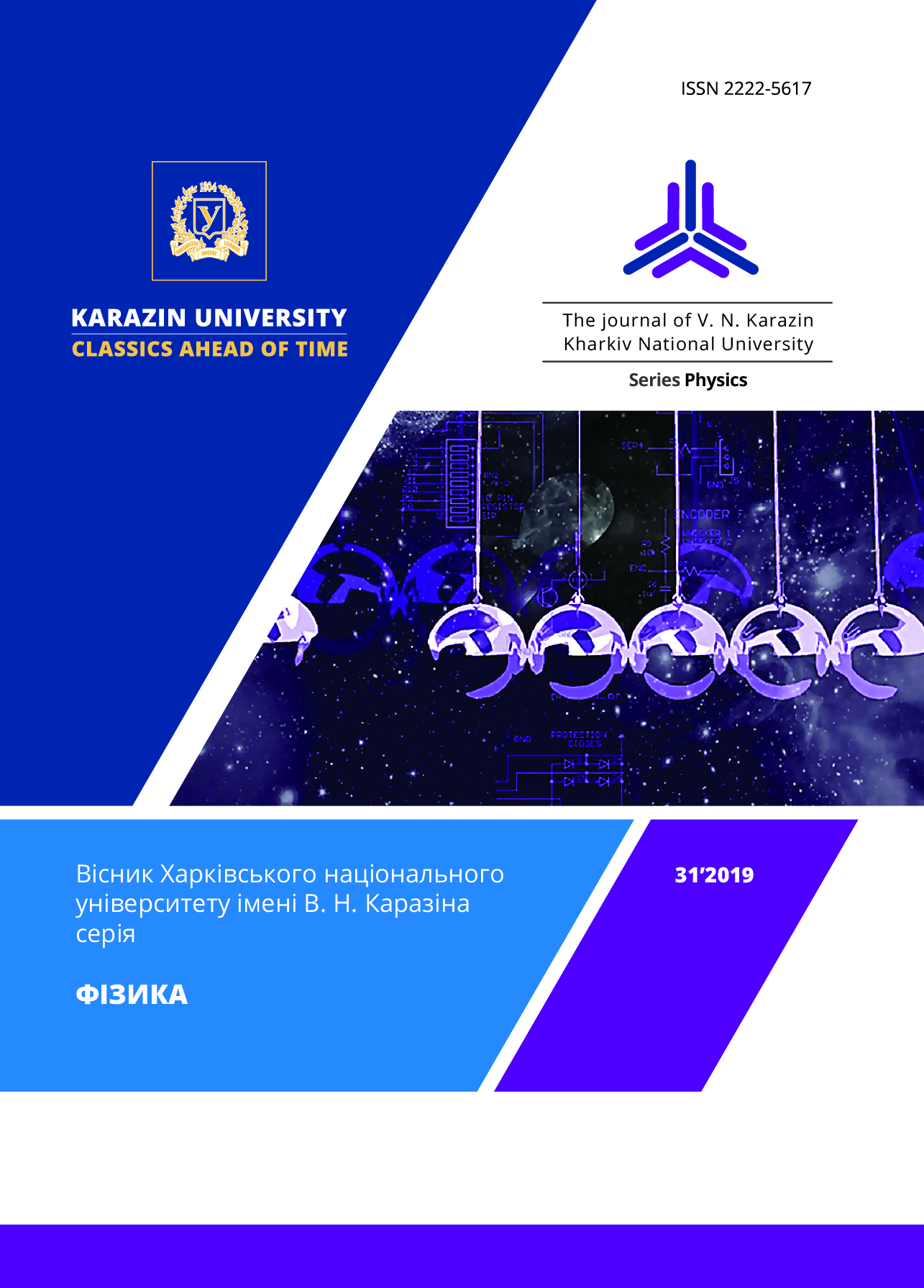Dynamics of coupled nonlinear systems
Abstract
Two models were studied theoretically which describe the dynamics of two nonlinear elements with linear and nonlinear
interaction between them. These models correspond to the commutators in nonlinear fiber optics and artificial lattices of magnetic
nanodots or magnetic layers in quasi-two dimensional compounds. The models illustrate the common situation in the nonlinear
systems with two degrees of freedom. Usually the absence of additional to the total energy integrals of motion leads to the
appearance of a chaotic component of the dynamics. This chaotic behaviour masks the reqular part of the total dynamics. In the
studied in the paper two integrable systems the chaotic component is absent and the reqular dynamics manifest itself per se. In the
paper at first the dynamics of the systems was investigated qualitatively in the corresponding phase planes. Two integrals of motion
correspond to the total energy E and the number N of elementary excitations in the system (photons and spin deviations). The
phase analysis demonstrates the complicated its dynamics. The excitations of different types are classified in the plane of the
integrals N,E . For the fix number of excitations N in the domain of small N the dynamics is close to the linear one and divides
into two regions for quasi-inphase and quasi-antiphase oscillations. But for the large level of the excitation after the definite value of
N N
b
in the bifurcation way the region of another dynamics appears. For N N
b
the minimum of the energy corresponds to the
essentially nonlinear regime with nonunifor average distribution of the energy between two oscillators. At the same time the critical
point which correspond to the in-phase oscillations transforms into saddle one and in-phase regime becomes unstable. As integrable
the studied systems allow the solutions in the quadratures. The exact solution of the dynamical equations for nonlinear dynamics
were obtained and analysed. The main result consists in the above prediction of the nonuniform states with different energies of
subsystems, their stability and instability of inphase oscillations. The nonuniform states corresponds to the solitonic excitations in
the systems with distributed parameters.
Downloads
References
F.Johansen, J.Linder, arXiv:1606.02720v1 [cond-mat. meshall] (2016).
W.Wustmann, V.Shumeiko, Fizika Nizkih temperature, 45, 995(2019) [LTP, 45, 995 (2019)
X.Zhon, V.Schmitt, P.Bartet et al., Phys. Rev. B 89,21517 (2014).
M.A.Castellanos-Beltran, K.D.Irvin et al., Nature Phys., 4, 929 (2008).
D.K.Agrawal, J.Woodhouse, A.Sesha, Phys. Rev. Lett., 111, 084101 (2013).
Qingfes Chen, Liang Huang, Ying Chang Lai, Appl. Phys. Lett., 92, 241914 (2008).
Y.Tserkovnyak, A.Brataas, G.Bauer, B.Halpein, Rev. Mod. Phys., 77, 1375 (2005).
D.Giridharan, P.Sabariesan, M.Daniel, Phys. Rev. E, 94, 032222 (2016).
Y.Kivshar, G.Agrawal, Optical solitons, Academic Press, Amsterdam (2003), 540 pp.
A.A.Ovchinnikov, ZhE`TF, 57, 263 (1969).
G.S.Zaft, S.P.Rejfman, Pis`ma v ZhE`TF, 15, 738 (1972).
A.M.Kosevich, A.S.Kovalev, Vvedenie v nelinejnuyu fizicheskuyu mekhaniku, Naukova dumka, Kiev (1989), 300str.
A.I.Akhiezer, V.G.Bar`yakhtar, S.V.Peletminskij, Spinovy`e volny`, Nauka, M. (1967), 367 str.








3.gif)
